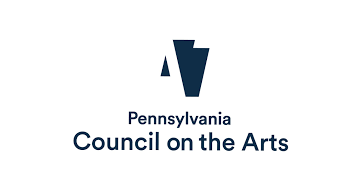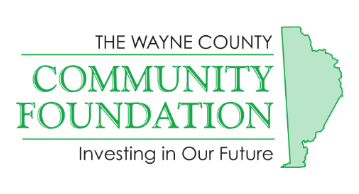Preparing for an Audition
At a typical audition for a musical theatre production, realistically you might only be able to sing 16 bars of a prepared song. That’s not much time to impress an auditioner who is determined to quickly judge you. Choosing the right song, preparing it for an audition and performing it well become paramount to your ultimate success. In fact, these factors can determine the outcome of your audition as much or even more than your vocal quality itself.
Choosing the Right Song
- Choose a piece that is appropriate for the type of show you’re auditioning for. For example, if you’re auditioning for Rent, don’t choose a song from Showboat as your audition piece.
- Choose a piece that is appropriate for the role that you’re auditioning for, based on the character type and age. If you are auditioning for a “character” role (for example, Matron Mama Morton in Chicago), don’t use a piece intended for a romantic ingénue lead character (such as Marion the Librarian from The Music Man).
- Choose a piece that you can start at the beginning that will immediately show off your skill and talent. If you’re significantly better at the chorus than the beginning verse, go ahead and start there. However, in the case that they like what you’re showing them, they may let you sing the entire song, so it would be better to have started from the beginning.
Preparing Your Song
Preparing a song to perform at an audition is different than preparing it to perform in a show. To begin with, you don’t have the same context at an audition as you do in a show. The auditioners have not had a chance to see you develop a character. You need to show them through your presentation of the song that you have a character in mind and that you can deliver powerful emotion through song alone, without props or other actors.
To achieve this, the song needs to be delivered as if it were a monologue. The song itself is only a part of the story, underneath the lyrics there should be an inner monologue or “subtext” that you develop which is your motivation for each lyric you sing. In the case of an audition piece, the subtext does not have to be at all related to the character or show that the piece came from. No matter what the song, you can write it as yourself, talking about issues from your own life.
To create the subtext for a song, do the following:
- Determine who your monologue is being delivered to. Is it to a good friend? To God? To your dead mother?
- Write all the lines of the song on a blank page, with a bunch of space between each line.
- For each line in the song, write a corresponding line of subtext underneath it. For example, let’s say I select the song “As Long As He Needs Me” from Oliver. My subtext is going to be about my crush on the guy at the video store, who is happy to chat with me when I want to buy a movie, but ignores me as soon as a leggy blonde walks in. The song (in bold) and subtext (in italics) for the first verse might look like:
As long as he needs me...
I’m going to keep going to that video store
Oh, yes, he does need me...
I know that he enjoys talking to me when I’m there, he can’t be faking that
In spite of what you see...
And he may flirt with that leggy blonde when she comes in, but we have a real connection that she can’t come close to matching
...I’m sure that he needs me.
Yes, deep down I know he doesn’t value her physical beauty over the bond we have over good movies!
Preparing Your Performance
Knowing how to sing a song amazingly well isn’t enough. You need to not only sing that song, but perform it. That is where the subtext comes in. When you sing a line of the song, you must be thinking and acting like you are saying the subtext. It should shape your facial expressions, your emotions and your movements.
Determine where the “audience” of your monologue is situated. Is it at the right side of the stage? In front of the stage? Above the auditioners’ heads? (Hint: Never use an auditioner as your monologue audience!)
Start at the center of the stage, which may be your bedroom floor when you’re practicing at home. For each line of the song, look at your subtext and determine:
- Does this line motivate me to physically move? For example, on a line where you’re pleading with your audience, you might be motivated to move a step or two closer to them, wherever you have determined that they are. Perhaps another line shows that you are embarrassed, so you might move away from your audience. Be careful with this, you do not want to move too much. Not every line needs physical movement. As a guideline, less than half of the lines should have movement attached. Try to finish the piece back at center stage. You should never have traveled more than a few feet in any direction from your starting point.
- What emotion does this line raise in me? Hatred? Sadness? Regret? Joy? How should my face reflect this?
- Where am I motivated to look for this line? Am I talking directly to my audience? Or is this line more about me talking to myself, so I might look slightly down instead of out? Perhaps the line is more of a daydream, so I would stare off into the distance. There are many possibilities. You don’t have to change your focus for every line; many consecutive lines may all focus in the same location. However, you should change your focus at least a few times throughout the piece.
Practice Makes Perfect
As with all things, practice makes perfect. Practice not just singing your piece, but performing it with your subtext in mind to motivate movements and facial expressions. There is a wonderful phrase from Stanislavski: “The difficult must become easy, the easy become habit, and the habit become beautiful.”
Keep this in mind while you practice! Your piece will eventually become so habitual that you won’t need to explicitly think about the words or the subtext; you will just feel them and be moved by them. That is when you will achieve the real beauty of the piece, and that is what the auditioners are looking for!
Backstage Pass
Wicked’s John Dossett and Michele Pawk on Life in the Theater, and Life Beyond It
John Dossett and Michele Pawk don’t wear their resumes on their…
Performances Announced for 2023 Tony Awards
Initial performances have been announced for the main telecast of the…
Big 10 2022: The 10 Most Represented Colleges on Broadway
Find out which colleges and universities had the most alumni…
Tickets
Box Office
Tickets for performances at Honesdale High School Performing Arts…
Plan Your Visit
Planning a visit to Honesdale High School Performing Arts Center? Need…
Purchase Tickets
OnStage at Honesdale Performing Arts Center
Seating
Persons will not be permitted inside the Honesdale High School…
Student Rush Tickets
Wayne Highlands School District students can order $5 rush tickets for…
Ticket Sales Policy
Tickets for performances at Honesdale High School Performing Arts…
OnStage 2025-2026
Annie Jr
Wayne Highlands Middle School proudly presents Annie Jr November 21-22, 2025
School of Rock
Honedale High School proudly presents School of Rock February 13-15, 2026
Chicago in Scranton
CHICAGO - The Musical Saturday, March 7, 2026




